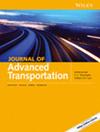Fuel Consumption Prediction in Regional Transport Based on Selected Bus Line Characteristics
Abstract
From an operational, economic and environmental point of view, it is crucial for public transport authorities and operators to be able to estimate fuel consumption in suburban bus transport. This is especially important when planning a new bus line or re-routing an existing one. This paper aims to identify a simple model for predicting fuel consumption in suburban bus transport based on commonly available input data based on local conditions. The article deals with the issue of fuel consumption of a bus with a conventional compression ignition engine operating on suburban bus lines in a predetermined region in Slovakia. The selected indicators related to the operation of the studied bus are analysed, including the average speed of the bus, the average distance between stops, the road profile of the line and the ambient air temperature. The study was conducted using both long-term and short-term measurements, allowing for a comprehensive analysis of the data. Linear regression and polynomial regression were employed to determine the relationship between fuel consumption and the input data. The results of the long-term experimental measurements and regression analysis indicate that a second-degree polynomial regression is the most accurate method for predicting fuel consumption in suburban bus transport when considering the ambient air temperature. Short-term experimental measurements and regression analysis also demonstrate that a second-degree polynomial regression is the most effective approach for predicting fuel consumption in suburban bus transport, incorporating the average slope of the bus route and the average distance between bus stops. Average vehicle speed did not have a significant effect on predicting bus fuel consumption due to specific reasons that affect average velocity in very different ways.


 求助内容:
求助内容: 应助结果提醒方式:
应助结果提醒方式:


